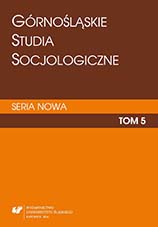„Inny” Śląsk — południowe rubieże województwa śląskiego
The “Other” Silesia — Southern Hinterlands of the Silesian Voivodeship
Author(s): Halina RusekSubject(s): Social Sciences
Published by: Wydawnictwo Uniwersytetu Śląskiego
Keywords: identity; multiculturalism; ethnic and cultural borderland
Summary/Abstract: One of the distinctive features of the Silesian Voivodeship — a region created by an administrative decision — is its multifaceted diversity, described in different contexts and recalled for different reasons, not only cognitive but also political ones. The voivodeship is a multicultural area characterized by a mosaic of cultural, religious and ethnic diversity. In everyday perception, as well as in the media, the Silesian Voivodeship is usually associated with the industrial agglomeration of softly defined borders, and rarely with its integral parts of Zagłębie, the Częstochowa region, the hilly Podbeskidzie and Cieszyn Silesia. The latter, historically belonging to Upper Silesia, forms the southern flanks of the region, the “other Silesia” — green and totally different in its geographical, social, cultural and partly also economic image than the other sub-regions that form Silesia. The region has the characteristics of an administrative, ethnic and cultural borderland. Situated on the Polish-Czech national border, it is also a cross-frontier area of major economic and political importance. It is also the fatherland for about 40 thousand Poles living in the Czech part of Cieszyn Silesia — known in Polish as Zaolzie. Therefore, when we think “Silesia”, we should also think of its southern lands as one of the varieties of “Silesianhood” which build, just like Upper Silesia, the identity of the region.
Journal: Górnośląskie Studia Socjologiczne. Seria Nowa
- Issue Year: 2014
- Issue No: 5
- Page Range: 42-57
- Page Count: 16
- Language: Polish

